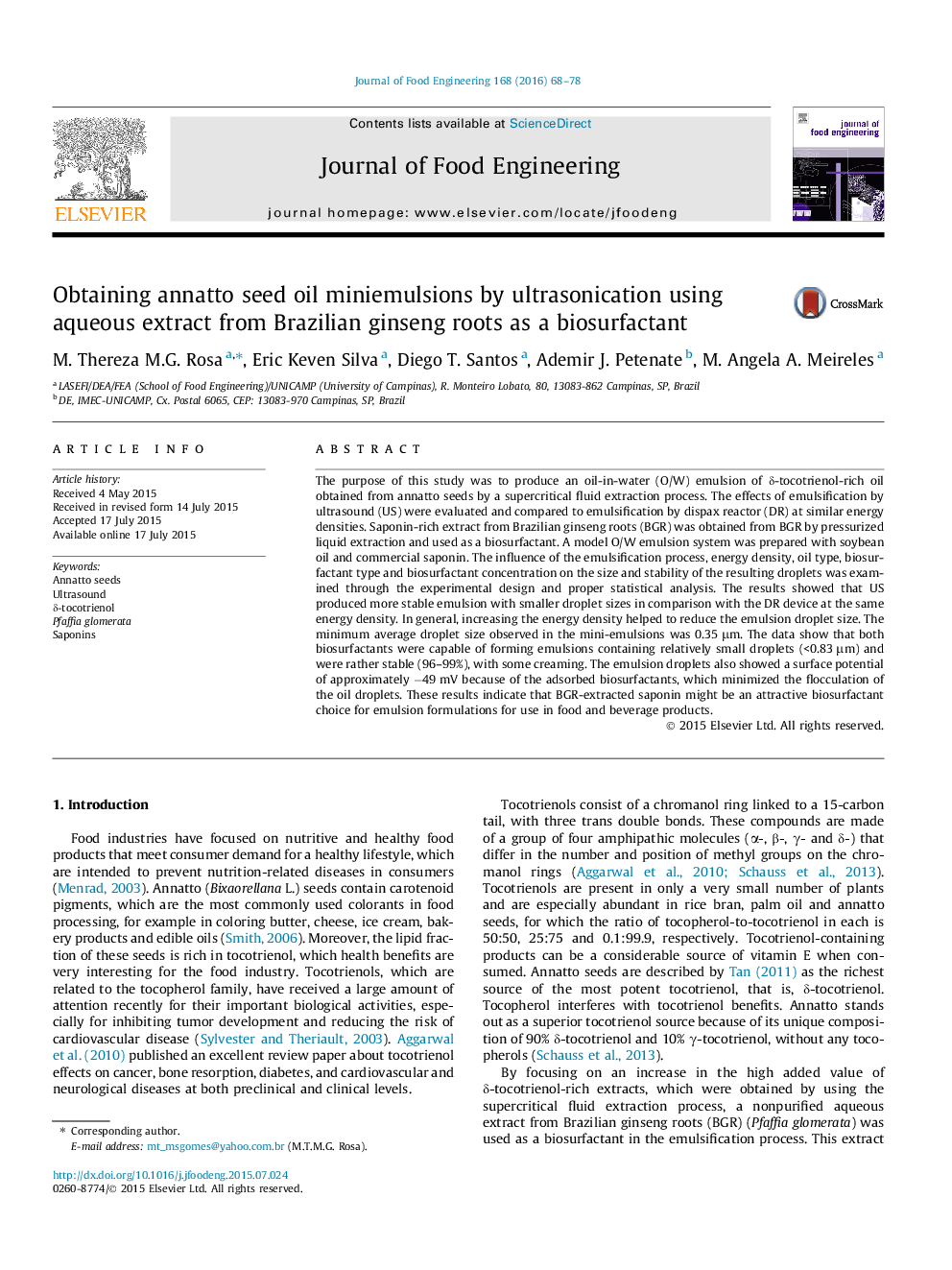| Article ID | Journal | Published Year | Pages | File Type |
|---|---|---|---|---|
| 6665030 | Journal of Food Engineering | 2016 | 11 Pages |
Abstract
The purpose of this study was to produce an oil-in-water (O/W) emulsion of δ-tocotrienol-rich oil obtained from annatto seeds by a supercritical fluid extraction process. The effects of emulsification by ultrasound (US) were evaluated and compared to emulsification by dispax reactor (DR) at similar energy densities. Saponin-rich extract from Brazilian ginseng roots (BGR) was obtained from BGR by pressurized liquid extraction and used as a biosurfactant. A model O/W emulsion system was prepared with soybean oil and commercial saponin. The influence of the emulsification process, energy density, oil type, biosurfactant type and biosurfactant concentration on the size and stability of the resulting droplets was examined through the experimental design and proper statistical analysis. The results showed that US produced more stable emulsion with smaller droplet sizes in comparison with the DR device at the same energy density. In general, increasing the energy density helped to reduce the emulsion droplet size. The minimum average droplet size observed in the mini-emulsions was 0.35 μm. The data show that both biosurfactants were capable of forming emulsions containing relatively small droplets (<0.83 μm) and were rather stable (96-99%), with some creaming. The emulsion droplets also showed a surface potential of approximately â49 mV because of the adsorbed biosurfactants, which minimized the flocculation of the oil droplets. These results indicate that BGR-extracted saponin might be an attractive biosurfactant choice for emulsion formulations for use in food and beverage products.
Related Topics
Physical Sciences and Engineering
Chemical Engineering
Chemical Engineering (General)
Authors
M. Thereza M.G. Rosa, Eric Keven Silva, Diego T. Santos, Ademir J. Petenate, M. Angela A. Meireles,
